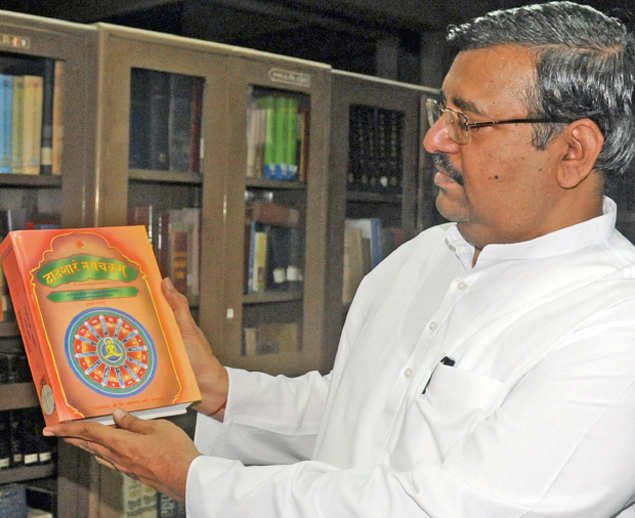
The Times Of India
AHMEDABAD: 11.11.2014
Analyses contained in Dwadasharnayachakra - a fifth century AD Jain treatise on comparative Indian philosophy - are key points of reference for scholars from across the globe who come to Gujarat to study Indian religious thought, particularly that of Jainism.
Few are aware though that this treasure was reported lost some 1,300 years ago. The version of the book that is available now has been painstakingly 'resurrected' by experts with the help of commentaries and critiques of that era. This unparalleled endeavour is akin to writing a textbook on the basis of available guides.
It took 30 years for the team led by Muni Jambuvijaya in Ahmedabad to recreate the Sanskrit scripture for the students of Darshan Shastra, the study of Indian and comparative religious philosophies dating back to 4th and 5th centuries AD. Such was his dedication that the muni learnt 14 languages - including Tibetan, German and French, apart from the classical Indian languages of Pali, Prakrit and Ardhamagdhi - to harness critical references from that era.
Jitendra Shah, the director of the LD Institute of Indology, who pursued a doctoral thesis on Dwadasharnayachakra, said that the book commands significance due to its content. "Acharya Mallavadi, a fifth century AD monk, had written the book as the outcome of his study of all religious thoughts and philosophies," said Shah.

Jitendra Shah with the book (TOI photo)
"It was named 'Dwadasharnayachakra' as there are 12 (dwadash) chapters outlining a set of philosophical tenets, each related to specific religions such as Hinduism, Buddhism and Jainism, which ultimately form a circle (chakra)." Shah said the acharya envisioned Jain Darshan as the yoke around which these philosophies revolved. "Thus, it is an important book for all ancient Indian religions," Shah said.